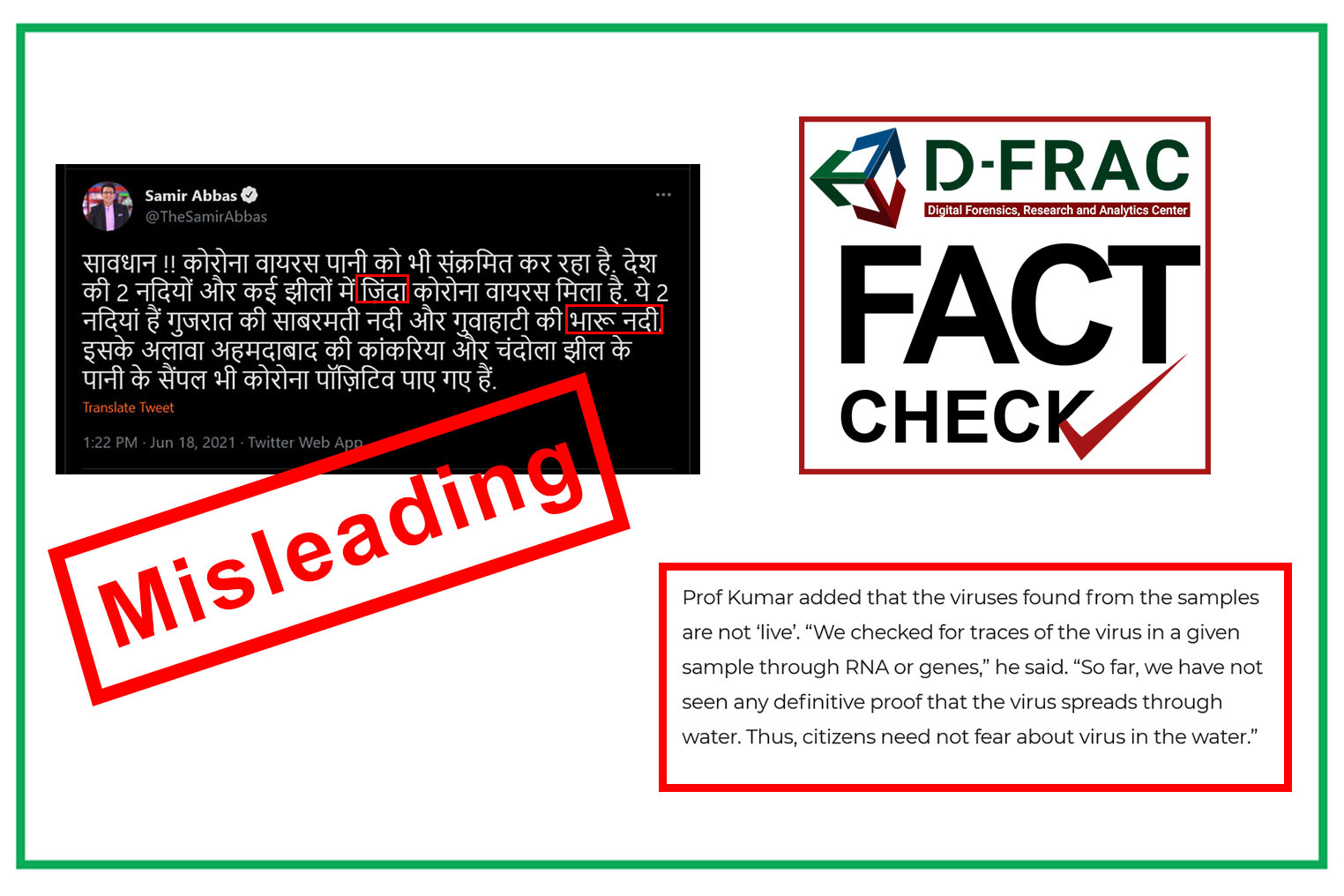On June 18,2021, PTI reported that a study conducted by IIT Gandhinagar and 8 other schools found traces of COVID-19 virus in water bodies. Many news sites and channels immediately took this story up because of its sensational nature. Samir Abbas, Executive Editor, TV9 Bharatvarsh tweeted that people need to be aware about the fact that live COVID-19 is now found in water bodies. He mentions that two rivers namely, Sabarmati in Gujarat and “Bharu” in Assam have been found with live Covid viruses.

He even did a Tv segment on the same claim reiterating that the virus found in these water bodies were live.
Several news media outlets also wrote about this study but maintained that there was no scope for the authors of the papers to know whether the virus was alive or not as it was not the ambit of their research. They also maintained that samples in Assam were taken from Bharu river.



Fact-Check:
To verify these claims, we were able to find the original research paper online. The paper makes no mention of a ‘Bharu’ river but the samples in Guwahati were taken from Bharalu river.

We exhausted all our resources online as well as offline to find out whether there is a Bharu river in Assam. According to government officials and locals, Bharu river does not exist.Secondly, as per the paper and remarks made by Prof Manish Kumar who spearheaded the project, their paper could not decipher whether the virus was alive or not. He emphasized on the need for further research on the topic.

This means that Samir Abbas and TV9 Bharatvarsh, whose claims that the virus found was alive is false.
The claim made by Samir Abbas, TV9 Bharatvarsh, News18, Yahoo News and Microsoft News that the samples were taken from ‘Bharu’ river is also False. A simple google search would have been enough to verify the fact that there is no Bharu river in Assam. Abbas’s tweet perhaps did not do as much damage and cause confusion as his show did. The premise of the entire broadcast is then false because the claims he made were severely lacked research and were not supported by concrete evidence






Comments are closed.